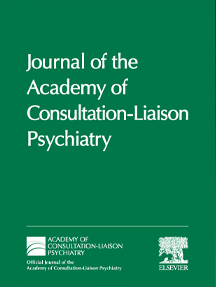'Trial-and-Error' Psychiatric Approach to Anti-NMDA Receptor Encephalitis Delays Treatment
Close multidisciplinary collaboration is the answer

Anique Forrester, MD
Information is lacking on the assessment and treatment of the variable behavioral manifestations of anti-NMDA receptor encephalitis.
“Unfortunately, case reports have revealed a trial-and-error method of treating psychiatric symptoms,” say researchers from the Department of Psychiatry, University of Maryland School of Medicine.
“The diagnosis is usually one of exclusion, unless the patient exhibits classic signs, or the treating physicians have had significant experience with the disorder. Confirmatory laboratory testing is quite limited in its availability. There is no standardized diagnostic and treatment algorithm for acute care physicians. Treatment is often delayed because many patients are initially thought to have a primary psychiatric illness.”
If the syndrome is left unrecognized and untreated, neurological symptoms, mostly movement abnormalities (e.g., catatonia, dystonia, dyskinesia, or chorea) will emerge. Patients may quickly become less responsive, and develop dysautonomia and hypoventilation, which often requires intensive care. Seizures occur in nearly 80% of cases.The mortality rate is 4%, primarily because of respiratory, cardiac, and infectious complications that usually occur while receiving intensive care.
In a paper in the September/October issue of Psychosomatics, the researchers discuss four challenging cases of anti-NMDAR encephalitis, focusing on the importance of a multidisciplinary approach to identification and management of the disorder, and the necessity of close collaboration for management of behavioral symptoms.
They present medication and nonpharmacologic treatment strategies that may facilitate management of psychiatric symptoms, both while the medical workup continues and after the diagnosis has been confirmed.
Background
Anti-NMDA receptor encephalitis was first described as a paraneoplastic condition associated with ovarian teratoma, marked by prominent memory deficits, psychiatric symptoms, and decreased consciousness.
In 2011, anti-NMDAR encephalitis was found to occur in more conditions than paraneoplastic syndromes, such as autoimmune synaptic encephalitis.
Unlike paraneoplastic NMDAR encephalitis, the autoimmune synaptic variant often responds to immunomodulatory therapies. More than 1,500 patients have been reported with the condition.A multicenter study of causes of encephalitis showed that 4% of patients had anti-NMDAR antibodies, second in frequency only to acute disseminated encephalomyelitis.
Initial symptoms of anti-NMDAR encephalitis are frequently non-specific. Unless there are definitive signs, such as extreme delta brush pattern on an electroencephalogram (EEG) or an ovarian teratoma, the differential diagnosis includes all autoimmune and infectious causes of encephalitis. Many of its features overlap with those of limbic encephalitides, including anti-Hu, anti-Ma2, anti-GAD, anti-AMPA, anti-GABA-B, and anti-LGI1. Up to 20-30% of patients with Herpes simplex virus (HSV) encephalitis develop anti-NMDAR antibodies, which may lead to symptomatic recurrence after resolution of acute HSV encephalitis. Such patients may not respond to treatment unless the syndrome is correctly identified.
Psychiatric symptoms are usually the first alarming and prominent findings, especially in those without a prior psychiatric illness. In a series of 100 patients with anti-NMDAR encephalitis, 77 initially presented for psychiatric care. For the first 1-3 weeks, patients may exhibit a wide variety of mood, anxiety, and psychotic symptoms; disorganized behaviors; and personality changes. Changes in language and speech are common, including alogia, echolalia, perseveration, mumbling, and mutism.These changes often persist or progress through later stages of the illness. The most common psychiatric symptoms include agitation (59% of cases), psychosis (54%), catatonia (42%), and mood lability (30%).
Multidisciplinary approach
In each of the cases and treatments described in the paper, clinical suspicion of this diagnosis and time to confirmatory diagnostic testing depended on close multidisciplinary collaboration, especially as anti-NMDAR encephalitis mimics symptoms of other disorders.
“Each patient was primarily managed by a different medical specialty, and input from other specialties was necessary to arrive at the correct diagnosis and course of treatment,” say the researchers. “In each of these cases, clinicians from different specialties made key observations leading to the elucidation of the clinical problem. Such collaboration leads to not only improved patient outcomes but also to a swifter, more accurate, diagnosis.”
“Clinical suspicion of diagnosis and time to confirmatory diagnostic testing depends on multidisciplinary collaboration.”
Psychiatric management is often a key aspect of care, both before and after a definitive diagnosis has been made: “Attention to an individual patient’s response has far more benefit than reliance on a particular medication or class of medications,” say the researchers. “Atypical presentations, unusual responses to standard medications, and clinical histories consistent with encephalitis should prompt clinicians to consult colleagues and to initiate testing as part of the diagnostic workup. Multispecialty collaboration is vital to increase awareness, facilitate more rapid diagnosis and treatment, and improve patient outcomes.”
Anti-NMDAR Encephalitis: A Multidisciplinary Approach to Identification of the Disorder and Management of Psychiatric Symptoms, by Anique Forrester, MD, and colleagues, is here.

